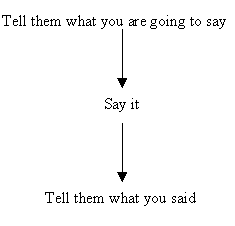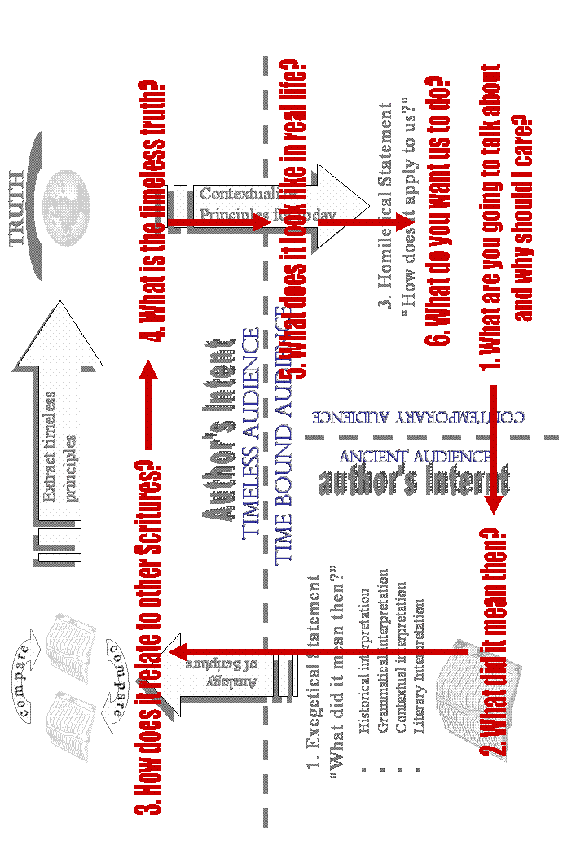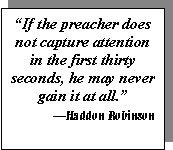5. Delivery
Gen. 25:27-34
25:24 When the time came for Rebekah to give birth,33 there were34 twins in her womb. 25:25 The first came out reddish35 all over,36 like a hairy37 garment, so they named him Esau.38 25:26 When his brother came out with39 his hand clutching Esau’s heel, they named him Jacob.40 Isaac was sixty years old41 when they were born.
25:27 When the boys grew up, Esau became a skilled42 hunter, a man of the open fields, but Jacob was an even-tempered man, living in tents.43 25:28 Isaac loved Esau, because he had a taste for fresh game,44 but Rebekah loved45 Jacob.
25:29 Now Jacob cooked some stew,46 and when Esau came in from the open fields, he was famished. 25:30 So Esau said to Jacob, “Feed47 me some of the red stuff—yes, this red stuff—because I’m starving!” (That is why he was also called48 Edom.)49
25:31 But Jacob replied, “First50 sell me your birthright.” 25:32 “Look,” said Esau, “I’m about to die! What use is the birthright to me?”51 25:33 But Jacob said, “Swear an oath to me now.”52 So Esau53 swore an oath to him and sold his birthright54 to Jacob.
25:34 Then Jacob gave Esau some bread and lentil stew; Esau ate and drank, then got up and went out.55 So Esau despised his birthright.56
Exegetical Outline
Gen. 25:27-34
I. Moses contrasts Jacob and Esau’s character by portraying Esau as a rugged hunter and Jacob as a more civilized man and gives this contrast in character as the background for the boy’s parent’s partiality (27-28).
A. As a grown man, Esau is said to be rugged and a great hunter while Jacob, by use of a disjunctive clause, is said to be civilized (27).
1. lit, “A man who knew hunting”
2. “Man of the field” found only here in the OT can only be defined by the contrastive statement that Jacob was a “tent dweller” meaning that he was civilized and therefore carry the meaning of “uncivilized.”
B. Because he loved the food that Esau brought, Isaac is said to love Esau, while Rebekah is said to love Jacob without explanation (28).
1. Again, a disjunctive clause is used here to juxtapose the partiality of the boys’ parents.
2. The explanation of Isaac preference for Esau is emphatic in that there is no explanation for Rebekah’s love for Jacob.
II. Esau foolishly gives up his inheritance of the family’s wealth by selling it to Jacob in exchange for a bowl of worthless “red stuff” in a time of extreme hunger and weakness (29-33).
A. Esau, having allowed himself to become starving, weak, and vulnerable while hunting, comes to Jacob’s house with an animal-like appetite and shouts for the first bit of food he sets his eyes on calling it “red-stuff” (29-30)
1. Word-play is used here to show how the hunter becomes the hunted.
2. The word “feed” used by Esau was used for feeding animals and portrays Esau’s weakness and appetite as animal-like.
3. The phrase “red-stuff” shows the barbaric nature of Esau’s hunger in which he is not concerned with what it is he just sees that it is edible and that he wants it.
B. Esau’s weak condition caused Jacob to use it to his advantage trading a worthless bowl of “red-stuff” for an invaluable birthright.
1. Explanation of the birthright.
2. Contrast between the birthright and the “red-stuff.”
III. Esau quickly ate the “red-stuff” and hated his birthright because of it.
Exegetical Proposition
Moses portrays Esau as a rugged animal-like person who satisfied his physical desire of hunger by trading something of immense value for something that was worthless.
Theological Outline
I. People’s temptations are often hereditary (27-28)
II. People’s weaknesses are often set up by previous experience (29-30)
III. People will often give up things of immense value for things that are worthless in times of temptation (31-33)
IV. Giving in to temptations causes you to move further away from God (34)
Structure


1. Life Need
2. Bible Learning
3. Bible Application
4. Life Response2
|
Into the lesson Into the Word Into life3 |
ü Receiving Information ü Exploring and Discovering ü Appropriating ü Assuming Responsibility4 |
|
1. Stating the Aim 2. Securing purposeful Bible Study 3. Developing the lesson 4. Making the lesson personal 5. Securing the carryover5 |
FOCUS: Turning heart to hear God’s Word.
DISCOVER: Personal or group interaction into God’s Word.
RESPOND: Applying God’s Word to life.6


I. What are you going to talk about and why should I care (Introduction)?

- Creates a need or a “hook.”
- Answers the audience’s question, “Why do I need to hear what you are talking about?”
- Gives a preview to orient and prepare the audience.
- Recognizes that people come to your lesson with much baggage from a hard week.
- Illustrates the importance of the forthcoming message.
Components of an Introduction:
1. Introduction
a. Illustration (personal if possible)
b. Current events
c. Creation of a dilemma
2. Challenge the Audience
a. Moves from you to them
b. Creates the “itch” or the need
3. Reveal the Subject (Homiletical Proposition)
4. Preview (Outline)
5. Context of the passage
6. Tell people to turn to the passage (give them time!)
What did it mean (Exposition/Exegetical)?
- Moves from 21st century to the ancient time of the text.
- Interprets the text to the audience.
- Communicates in terms the audience will understand.
- Answers the question “What did it mean then?”
II. How does it relate to other Scriptures (Correlation)?
- Correlates the lesson with other Scriptures.
- Systematic theology on the topic.
- Verifies the “Big Idea.”
III. What is the timeless truth (Principlization/ Theological)?
- Extract the timeless principles and communicate them succinctly.
- Use timeless language.
- Ask the questions:
1. What does this tell us about God?
2. What does this tell us about man?
IV. What does it look like in real life (Illustration)?
- Illustrates the lesson.
- Shows how this is relevant to the audience.
- Motivates people to action.
- Inspires people and prepares them to apply the lesson.
What do you want us to do (application)?
- Summary of message.
- Shows how your audience can apply the teaching to their lives.
- Specific actions.
- Many imperatives.
- Brings closure to the lesson.
|
Good Conclusion |
Bad Conclusion |
|
“Let me give you four points of application” (5-10 min) |
“And may God apply these truths to our lives. Amen” |
Big Picture of a Sermon/Lesson
|
Option One |
Option Two |
Option Three |
|
Introduction I. Point #1 A. Exegetical B. Theological C. Homiletical II. Point #2 A. Exegetical B. Theological C. Homiletical III. Point #3 A. Exegetical B. Theological C. Homiletical Conclusion |
Introduction I. Exegetical II. Theological III. Homiletical Conclusion |
Combination of the two. Makes sure that each category is represented somewhere. |
33 tn Heb “And her days were filled to give birth.”
34 tn Heb “look!” By the use of the particle הִנֵּה (hinnēh, “look”), the narrator invites the audience to view the scene as if they were actually present at the birth.
35 sn Reddish. The Hebrew word translated “reddish” is ˒ad̄mōni (אַדְמרֹנִי), which forms a wordplay on the Edomites, Esau’s descendants. The writer sees in Esau’s appearance at birth a sign of what was to come. After all, the reader has already been made aware of the “nations” that were being born.
36 tn Heb “all of him.”
37 sn Hairy. Here is another wordplay involving the descendants of Esau. The Hebrew word translated “hairy” is śē˓ār (שֵׂעָר); the Edomites will later live in Mount Seir, perhaps named for its wooded nature.
38 tn Heb “And they called his name Esau.” The name “Esau” is not etymologically related to śē˓ār (שֵׂעָר), but it draws on some of the sounds.
39 tn The disjunctive clause describes an important circumstance accompanying the birth. Whereas Esau was passive at birth, Jacob was active.
40 tn Heb “And he called his name Jacob.” Some ancient witnesses read “they called his name Jacob” (see v. 25). In either case the subject is indefinite.
sn The name Jacob is a play on the Hebrew word for “heel,” ˓āqēb̄ (עָקֵב). The name (since it is a verb) probably means something like “may he protect,” that is, as a rearguard, dogging the heels. It did not have a negative connotation until Esau redefined it. This name was probably chosen because of the immediate association with the incident of grabbing the heel. After receiving such an oracle, the parents would have preserved in memory almost every detail of the unusual births.
41 tn Heb “the son of sixty years.”
42 tn Heb “knowing.”
43 tn The disjunctive clause juxtaposes Jacob with Esau and draws attention to the striking contrasts. In contrast to Esau, a man of the field, Jacob was civilized, as the phrase “living in tents” signifies. Whereas Esau was a skillful hunter, Jacob was calm and even-tempered (tām [תָּם], which normally has the idea of “blameless”).
44 tn Heb “the taste of game was in his mouth.” The word for “game,” “venison” is here the same Hebrew word as “hunter” in the last verse. Here it is a metonymy, referring to that which the hunter kills.
45 tn The disjunctive clause juxtaposes Rebekah with Jacob and draws attention to the contrast. The verb here is a participle, drawing attention to Rebekah’s continuing, enduring love for her son.
46 sn Jacob cooked some stew. There are some significant words and wordplays in this story that help clarify the points of the story. The verb “cook” is zid̄ (זִיד), which sounds like the word for “hunter,” ṣayid̄ (צַיִד). This is deliberate, for the hunter becomes the hunted in this story. The word zid̄ (זִיד) means “to cook; to boil,” but by the soundplay with ṣayid̄ (צַיִד) it comes to mean “set a trap by cooking.” The usage of the word shows that it can also have the connotation of acting presumptuously (as in boiling over). This too may be a comment on the scene. For further discussion of the rhetorical devices in the Jacob narratives, see J. P. Fokkelman, Narrative Art in Genesis (SSN).
47 tn The rare term לָעַט (lā˓aṭ), translated “feed,” is used in later Hebrew for feeding animals (see Jastrow, 714). If this nuance was attached to the word in the biblical period, then it may depict Esau in a negative light, comparing him to a hungry animal. Famished Esau comes in from the hunt, only to enter the trap. He can only point at the red stew and ask Jacob to feed him.
48 tn The verb has no expressed subject and so is given a passive translation.
49 sn Esau’s descendants would eventually be called Edom. Edom was the place where they lived, so-named probably because of the reddish nature of the hills. The writer can use the word “red” to describe the stew that Esau gasped for to convey the nature of Esau and his descendants. They were a lusty, passionate, and profane people who lived for the moment. Again, the wordplay is meant to capture the “omen in the nomen.”
50 tn Heb “today.”
51 tn Heb “And what is this to me, a birthright?”
52 tn Heb “Swear to me today.”
53 tn Heb “and he”; the referent (Esau) has been specified in the translation for clarity.
54 sn And sold his birthright. There is evidence from Hurrian culture that rights of inheritance were occasionally sold or transferred. Here Esau is portrayed as a profane person who would at the moment rather have a meal than the right to inherit. He will soon forget this trade and seek his father’s blessing in spite of it.
55 sn The style here is typical of Hebrew narrative; after the tension is resolved with the dialogue, the working out of it is recorded in a rapid sequence of verbs (“gave”; “ate”; “drank”; “got up”; “went out”). See also Gen. 3:1–7 for another example.
56 sn So Esau despised his birthright. This clause, which concludes the episode, is a summary statement which reveals the underlying significance of Esau’s actions. “To despise” means to treat something as worthless or with contempt. Esau’s willingness to sell his birthright was evidence that he considered it to be unimportant.
2 Dan Lioy, ed., Adult Teacher’s Guide, David C. Cook’s Bible in Life Curriculum (Colorado Springs: Cook Communications, June, July, August, 1997), 5.
3 Standard Publishing, Patricia Alderdice Senseman, ed. Christians in Action, Kiddler Curriculum (Cincinnati: Standard Publishing Company, Summer 1997), 2.
4 Lowell E. Brown, Sunday School Standards (Ventura, CA: Gospel Light Publications), 19-20.
5 Findley B. Edge, Teaching for Results (Nashville, Broadman and Holman Publishing, 1995), 106.
6 Scripture Press Teaching Guide, Studies in Ecclesiastes and Sing of Songs (Colorado Springs: Scripture Press, June, July, August, 1997).
Related Topics: Teaching the Bible

